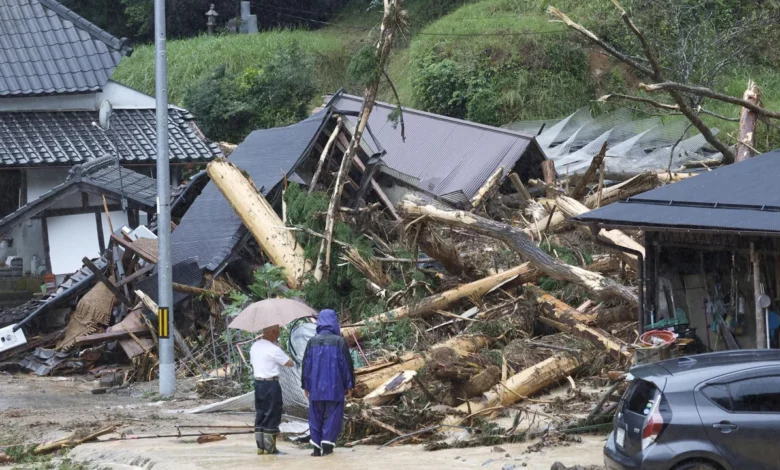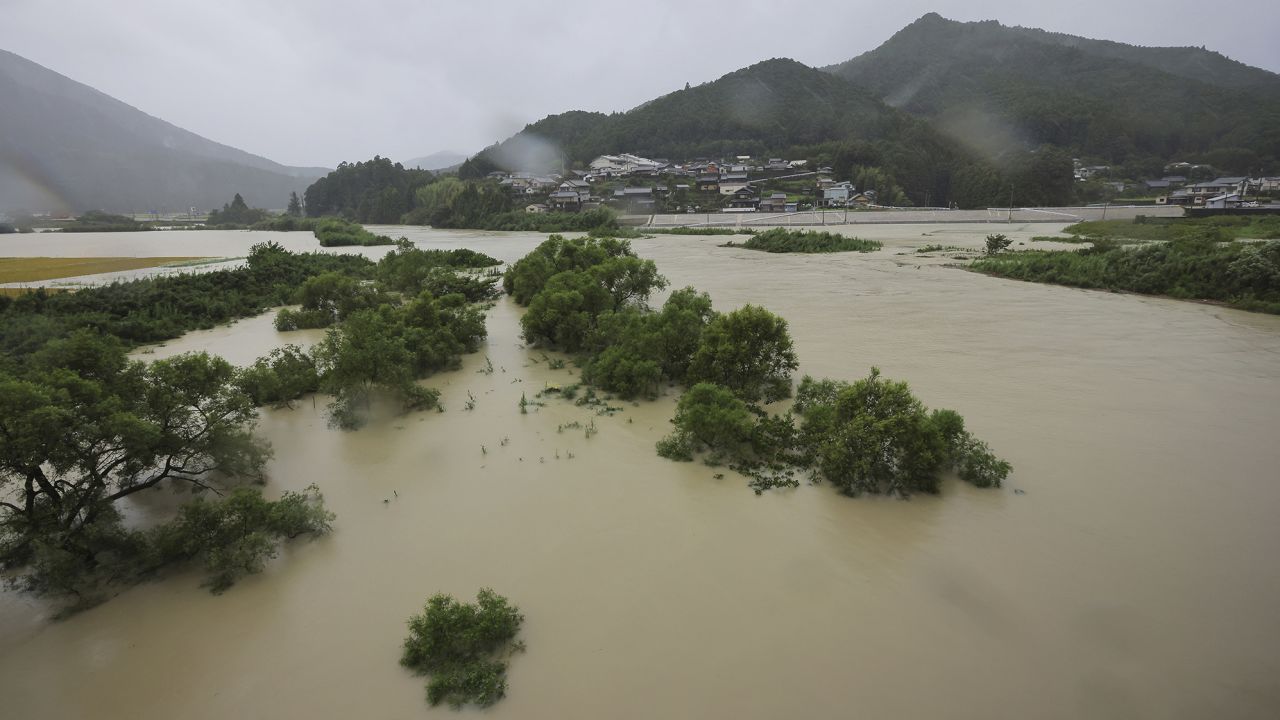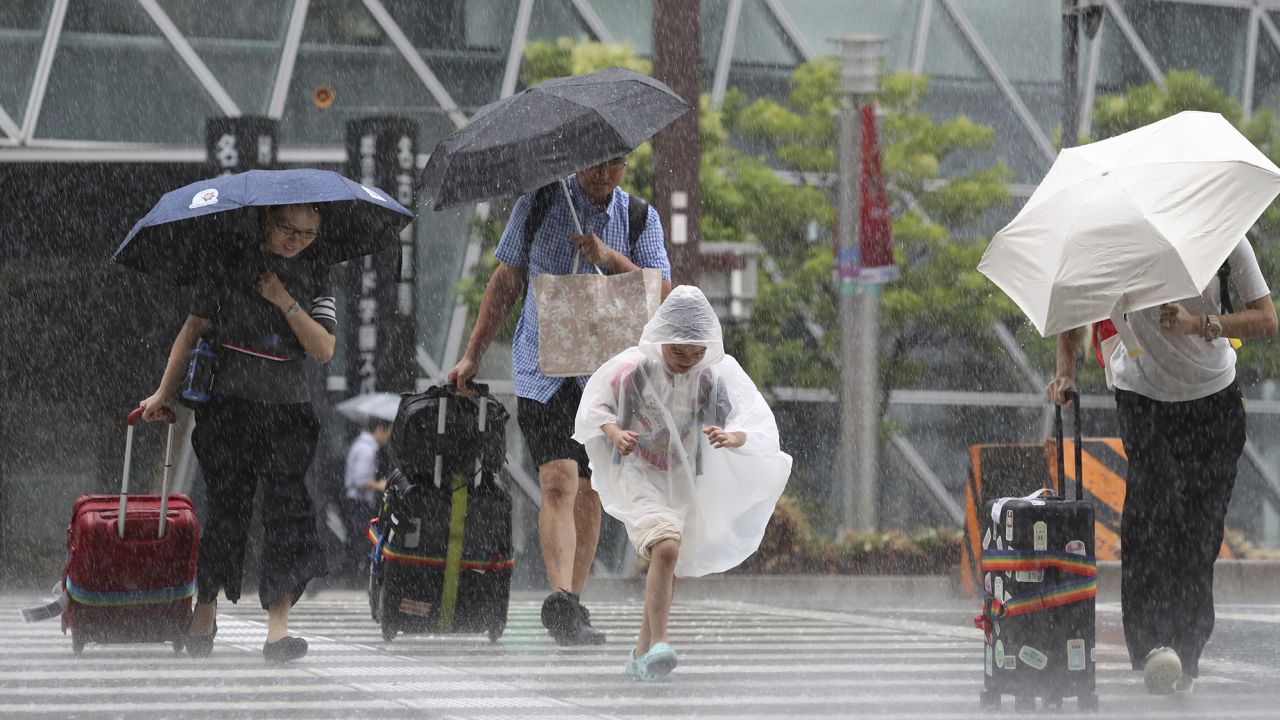
The typhoon made landfall near Shionomisaki in Japan’s Wakayama prefecture around five a.m. local time Tuesday morning with winds nearing 160 kilometers per hour (100 mph), equivalent to a Category 2 hurricane.
At least 26 people have been injured in five prefectures across western Japan, according to Japan’s public broadcaster NHK, citing police and fire officials.
In two towns in Tottori and Okayama prefectures, rainfall over a few hours on Tuesday exceeded the average for the entire month of August. Tottori city recorded 483 millimeters (19 inches) of rainfall and Kagamino town in Okayama recorded 461.5 millimeters (18 inches), according to the Japan Meteorological Agency.


The powerful storm has caused power outages to tens of thousands of homes, NHK added.
All commercial flights out of Kansai, Chubu and Nagoya airports are currently suspended for the day, with more than 950 canceled nationwide, a spokesperson from Japan’s Ministry of Land, Infrastructure and Tourism told CNN.
The spokesperson said that all Japan Airlines and All Nippon Airlines (ANA) flights have been suspended.
Typhoon Lan follows Typhoon Khanun, which lashed southwestern Japan with wind and rain earlier this month.
Like many other Asian countries, Japan has been grappling with deadly extreme weather this summer. In July, heavy rainfall in the southwest of the country led to flooding and mudslides which left at least six people dead. The same month, Japan experienced intense heat waves, with temperatures above 39 degrees Celsius (102 Fahrenheit) in some places.
Scientists are clear that human-caused global warming will increase the frequency and intensity of extreme weather events.




